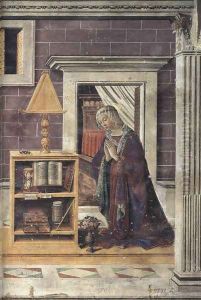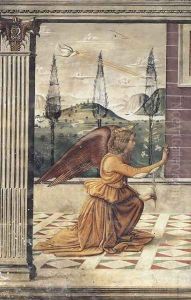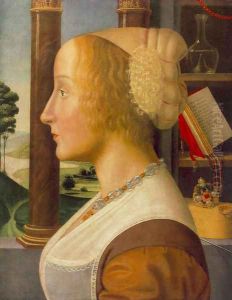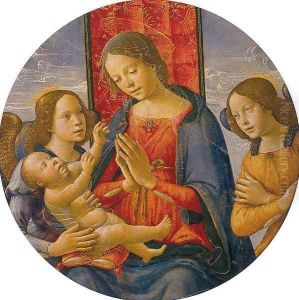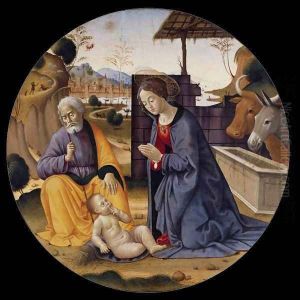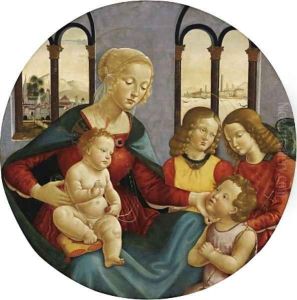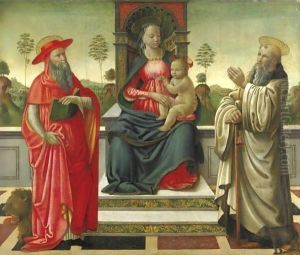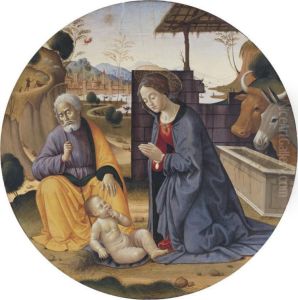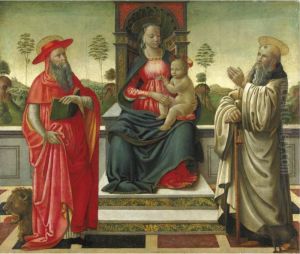Bastiano Mainardi Paintings
Bastiano Mainardi was an Italian painter of the Renaissance period, born in San Gimignano in 1460. He is often considered a disciple and close collaborator of Domenico Ghirlandaio, one of the leading fresco painters of the time. Mainardi's work is noted for its delicate execution and detailed narrative quality, traits he likely honed under Ghirlandaio’s guidance. His contributions to art are best seen in the realms of religious frescoes and portraits, where his skill in depicting human emotion and sacred themes is evident.
Mainardi's career was largely spent in Florence, where he absorbed the city's vibrant artistic culture and was influenced by the works of other Renaissance masters. Despite being in the shadow of his more famous contemporary, Ghirlandaio, Mainardi developed a distinctive style that emphasized clarity and a soft, gentle approach to figures and landscapes.
One of his most notable works is the fresco decoration of the Chapel of Santa Fina in the Collegiata of San Gimignano, where his mastery in fresco technique and ability to convey spiritual narratives through art are prominently displayed. Mainardi also excelled in portraiture, capturing the likenesses and personalities of his subjects with a remarkable sensitivity.
Throughout his career, Mainardi's work showcased a blend of traditional elements with emerging Renaissance ideals of beauty, perspective, and humanism. His paintings and frescoes, while not as widely recognized as those of his contemporaries, contribute significantly to the understanding of Renaissance art's evolution.
Mainardi passed away in 1513, leaving behind a body of work that, though it may not have achieved the fame of his peers, reflects the rich artistic environment of Renaissance Italy and the complex interplay of influences that characterized the period. His legacy is preserved in the churches and galleries that house his works, offering insight into the nuanced development of Renaissance art.
